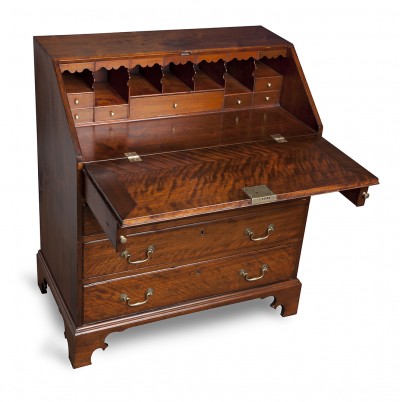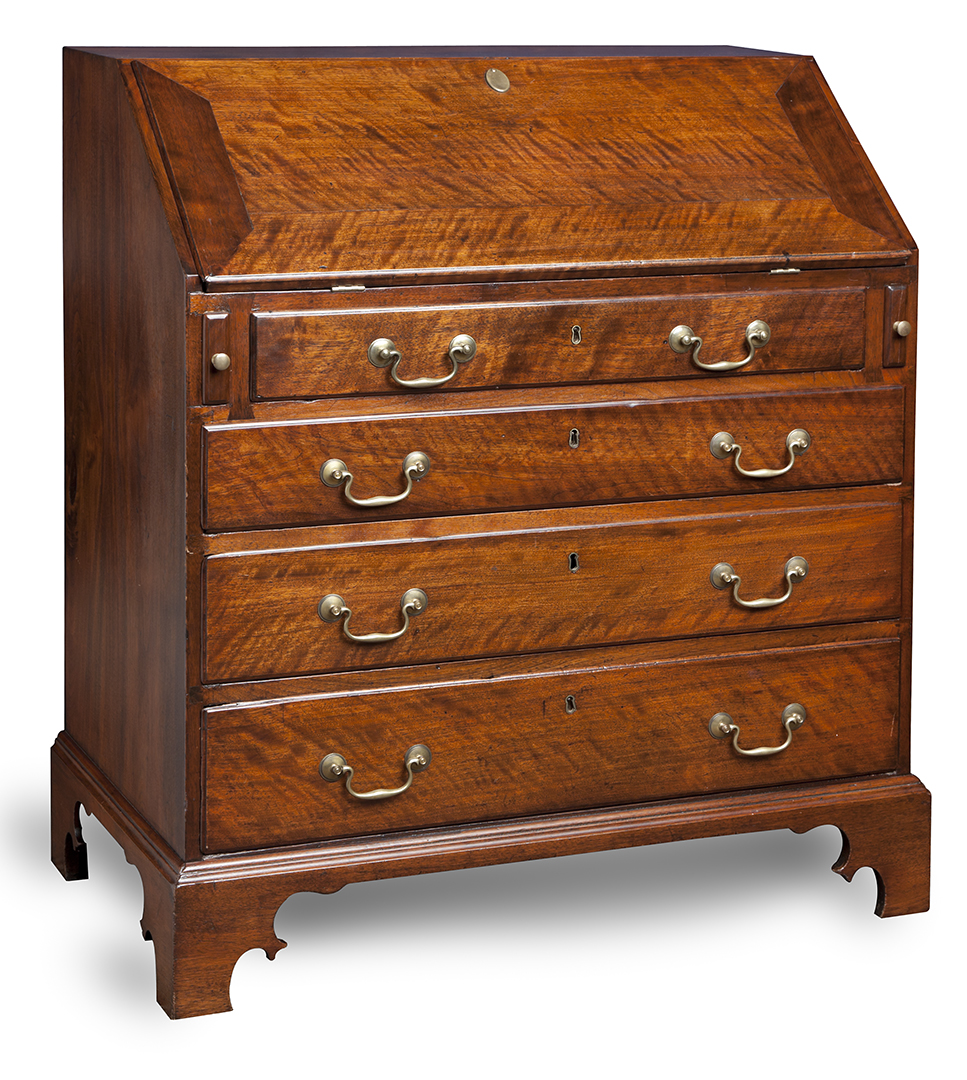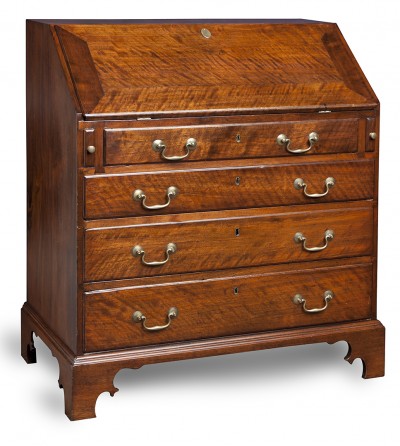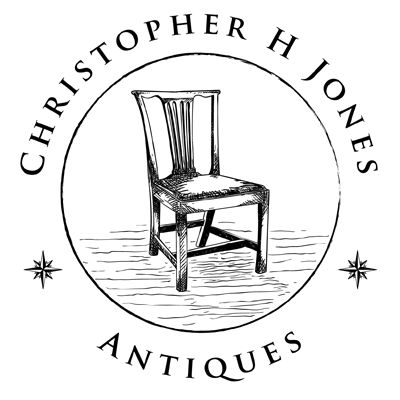Walnut Desk
Sussex County, Virginia
Circa 1770-1780
Of Exceptional Size, Form and Condition
Commentary: This fine black walnut fall front desk is representative of the deeply conservative nature of the early English colonists, particularly those who pushed into the Virginia interior beyond the relatively easy transportation system provided by the major rivers and Chesapeake Bay. The clean lines of the case and severe interior give an initial impression of simplicity and unrelieved austerity. A second look however reveals a wealth of details that belie the notion and demonstrate a high level stylish creativity by a cabinetmaker that greatly enhance this familiar form. The carefully chosen black walnut utilized in the fall board has a strong graining reminiscent of maple that provides movement both when the desk is open and closed. The subtle effect of the grain is continued down the front through the graduated, lipped drawers. The entire case rests on boldly formed bracket feet set off by dramatic forked spurs that are highly unusual and possibly unique to this unknown cabinet maker. Similarly a closer look at the desk’s interior reveals valences distinguished by their deep scalloping. The vertical dividers, often left plain, are also deeply scalloped but in their own, unique pattern. The total effect is concentrated by the diminutive scale, the desk measuring only 36” wide and 42” tall and 20” deep.
Although the identity of the maker has yet to be discovered, he was active in the Southside area of Virginia in the period 1760-1790 and left a small body of work distinguishable by a number of stylistic and structural characteristics. At least four desks by this cabinet maker have survived, all with histories in or around Sussex County, the most prominent of which is in the collection of Colonial Williamsburg and bears the names of several local citizens along with the inscription, “Comann’s Well”, a well known home/inn dating to the early 19th century. These desks share with our example distinctive and unusual structural similarities, which along with the unique foot design, clearly indicate the origins in the same shop. These similarities include mitered interior drawer backs, rear boards set in rabbets on four sides, double mitered fall board with through- tenoned battens, rabbeted base molding, mitered, blind dovetailed feet, hidden drawers behind the outermost valences, and exposed dovetailing on the case front. MESDA researchers have identified a handful of cabinetmakers working in Sussex County during this period that can be considered as the possible maker of these desks but no documentary evidence has yet surfaced conclusively linking any one of the artisans to the group.
In his recent history of Sussex County, Gary Williams discusses the political development and early settlement patterns of the Southside counties that bordered the James River. While the history of Sussex County is complex, in essence, it lies to the south of Williamsburg across the James and was created in 1754 from the southernmost portions of Surry County. It stretches nearly to North Carolina and bordered Brunswick, Southampton and Dinwiddie Counties. The great majority of its inhabitants were of British ancestry, if not birth, and their tastes in architecture, furniture and fashion were strongly influenced by their cultural heritage which this desk reflects.
Condition: Few desks from the pre-Revolutionary War era have survived in as fine a condition as this exceptional example. The desk retains its original distinctive feet and integral base molding, which form a rabbeted frame into which the case is permanently secured by large forged nails. The original straight bracket feet are distinguished by their forked spurs that are repeated on the desk’s sides. The oxidized vertical back boards, original and undisturbed, are inset and secured with multiple original rose head nails. Two of the original bail and rosette brass pulls have survived and are matched by reproductions that are virtually indistinguishable from the originals, all set in their original holes. The secondary woods are yellow pine, poplar and as is common in early tidewater Virginia furniture, oak.
Price: sold.



